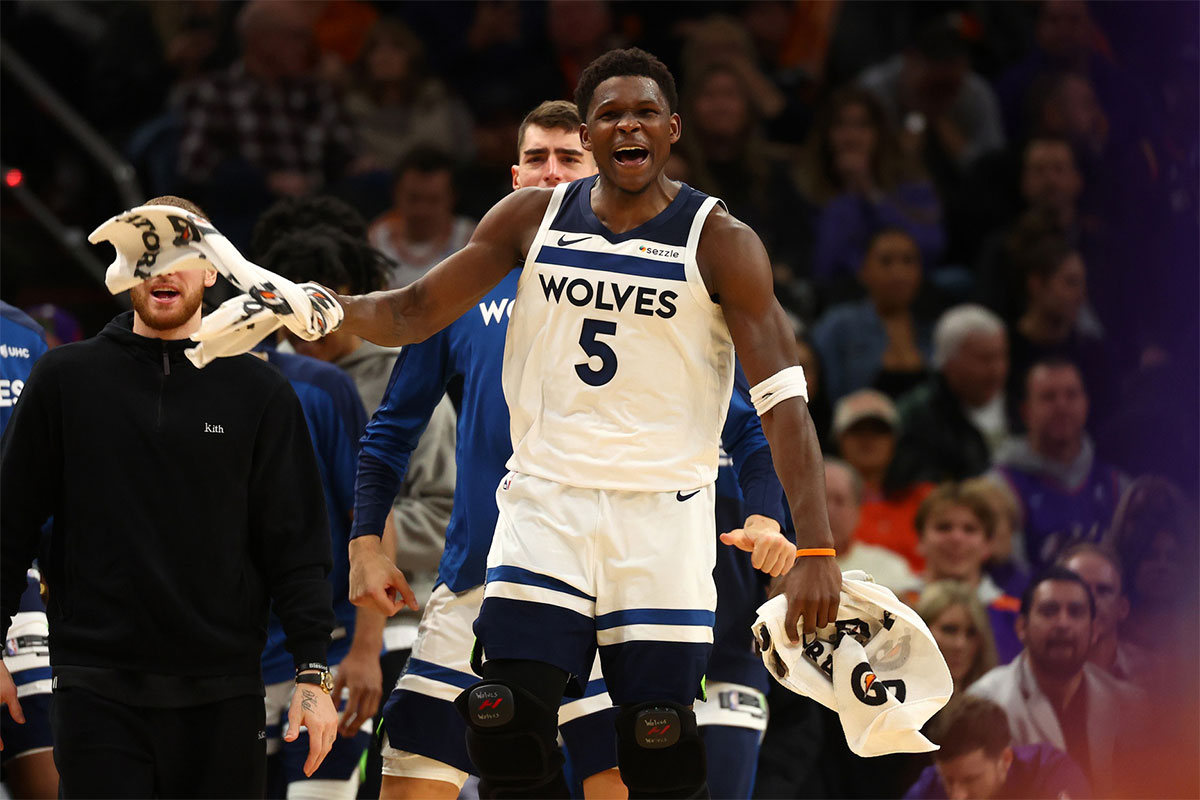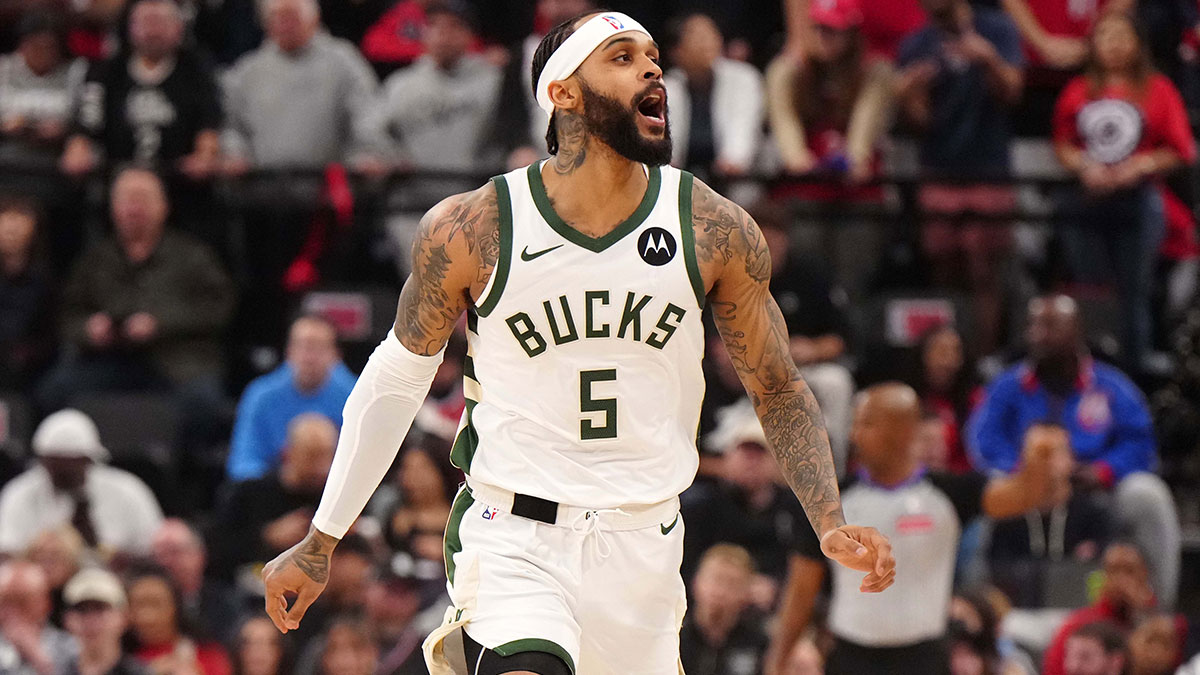
The Timberwolves recently appeared to be on an upswing. They were riding a five-game winning streak heading into the weekend before an unexpected loss to the lowly Washington Wizards. As of this writing, the Wolves are playing against the Sacramento Kings. Take note that Minnesota made some financial adjustments by trading Karl-Anthony Towns to the New York Knicks and securing a Rudy Gobert extension that reduced his salary for the 2025-26 season. Meanwhile, Julius Randle and Naz Reid both hold player options for next season. This gives them the leverage to opt out and potentially push the Timberwolves into renegotiating their contracts.
Rumors around the league suggest Minnesota is actively shopping Randle. He may find himself with no better option than to opt into his $30.9 million deal for next season. Despite his offensive production, there’s a growing belief that the Timberwolves are open to making changes.
Season So Far
At 27-22, the Timberwolves remain firmly in the playoff race but have battled inconsistency throughout the season. Injuries, roster fit issues, and occasional offensive stagnation have kept them from cracking into the Western Conference’s top tier. Anthony Edwards has been exceptional, of course. He is posting career-best numbers and cementing his role as the team’s leader. However, Minnesota should view the trade deadline with an eye toward future seasons rather than just this year. As such, their financial situation will undoubtedly come into focus.

This is an expensive roster with long-term financial implications. That’s even without considering upcoming contract decisions for free agents like Nickeil Alexander-Walker and Reid. Then, of course, there’s the looming Randle question. That adds another layer of complexity to the Timberwolves’ trade deadline plans.
Here we will discuss the player who’s part of the Minnesota Timberwolves’ dream scenario for the 2025 NBA trade deadline.
The Ideal Trade Scenario
What would be the perfect trade for Minnesota? Pulling the trigger on a deal that sends Julius Randle to the Milwaukee Bucks in exchange for Gary Trent Jr, possibly with some additional assets included. Like the Timberwolves, the Bucks are navigating second apron restrictions. This means that Minnesota can only bring in players on minimum or near-minimum contracts unless they decide to move a key piece of their roster. This is why Trent makes sense.
He entered the season with hopes of securing a bigger payday after signing a one-year, prove-it deal with Milwaukee over the summer. Instead, he found himself benched by November and is currently posting his lowest scoring numbers (9.6 points per game) since the 2019-20 season.
Nevertheless, Trent remains a skilled shooter. As of this writing, he is hitting 42.0 percent from beyond the arc. He should be a valuable offensive weapon alongside Edwards, helping to ease the scoring burden on the young star.
Just keep in mind that the Timberwolves have fallen short of expectations this season. They have limited flexibility due to their position above the second apron. A cost-effective option like Trent could offer a much-needed scoring punch off the bench. That said, for the most part, Minnesota will need to rely on internal improvements from players like Mike Conley and Jaden McDaniels.
Why Gary Trent Jr?
Trent’s $2 million contract makes him an attainable target for the Wolves, but the trade logistics are critical. In an ideal situation, Minnesota could offer Randle and maybe even acquire another role player or future assets in return. That said, the Bucks would likely need to sweeten the pot with additional assets to make the deal appealing for Minnesota. Again, the fact that both teams are in the second apron makes any potential deal very tricky. It’s not impossible, though it would require a lot of creativity.

The Case for Trading Julius Randle
Statistically, Julius Randle doesn’t seem to be the root of Minnesota’s struggles. As of this writing, the Timberwolves actually outscore opponents when he’s on the court. However, the eye test paints a different picture. Randle’s tendency to stall the offense with ball-dominant play and his inconsistent defensive effort have often disrupted the team’s flow.
For Minnesota, Randle’s fit on the court may be secondary to the financial implications of his contract. He’s earning $33.1 million this season and holds a $30.9 million player option for 2025-26. Moving him could help the Timberwolves balance their books while also improving roster flexibility ahead of the playoffs.
Letting Randle walk in free agency could be an option if he declines his player option. However, given the limited market for his services at his current price, there’s a strong chance he opts in. This would leave Minnesota stuck with a large contract that doesn’t align with their long-term vision. The best course of action might be to trade Randle before the deadline, giving the Timberwolves a chance to recapture the form that took them to the conference finals just a season ago.
A Catalyst
The clock is ticking, and the Timberwolves are at a defining juncture. The decision to trade Julius Randle for Gary Trent Jr. could be the catalyst that propels Minnesota into serious title contention. It’s a move that balances immediate needs with long-term vision, all while addressing the glaring offensive inconsistencies that have held the team back. The Western Conference is as competitive as ever, and the margin for error is razor-thin—but with bold action at the deadline, the Timberwolves can seize control of their destiny and make a legitimate push for an NBA championship.
More must-reads:
- Watch: Pacers, Tyrese Haliburton eliminate the Bucks in OT
- Kings to make Doug Christie new head coach in full-circle moment
- The '2023-24 NBA playoff points-per-game leaders' quiz
Breaking News
Trending News
Customize Your Newsletter
 +
+
Get the latest news and rumors, customized to your favorite sports and teams. Emailed daily. Always free!








